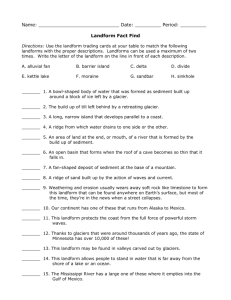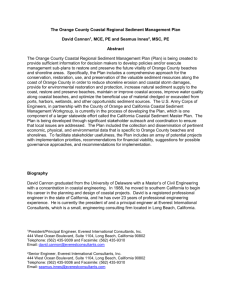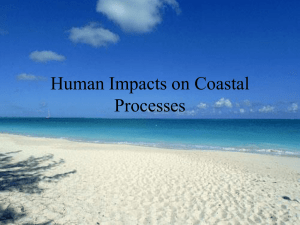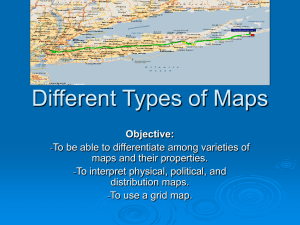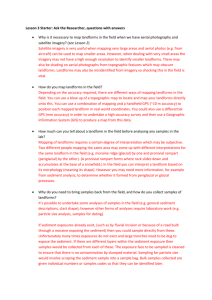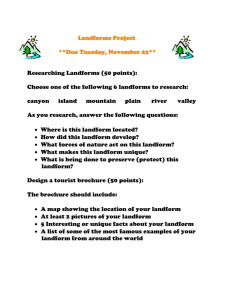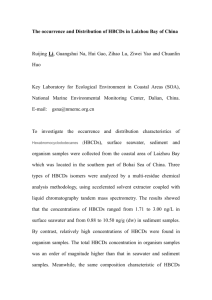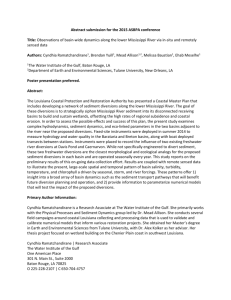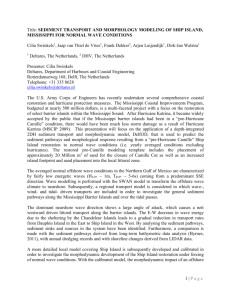iCOASST
advertisement
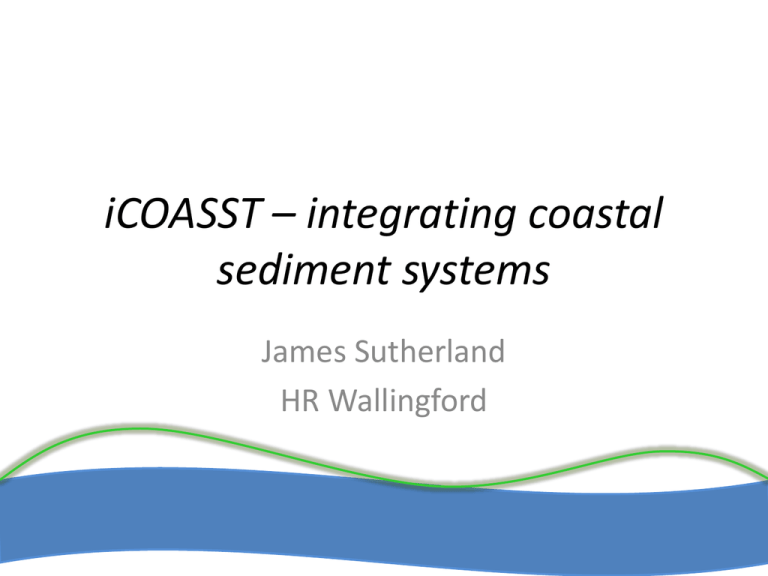
iCOASST – integrating coastal sediment systems James Sutherland HR Wallingford the iCOASST project • Four year R&D project funded by Natural Environment Research Council (NERC) and supported by Environment Agency (EA) • Runs from 2012 to 2016 • Coordinated by University of Southampton The iCOASST team Organisation PI & researchers University of Southampton Robert Nicholls, Justin Dix University of Oxford Jim Hall, Andres Payo UCL Jon French, Helene Burningham, Gillian Thornhill Swansea University Dominic Reeve, Harshinie Karunarathna University of Manchester Peter Stansby NOC, Liverpool Alex Souza, Jenny Brown HR Wallingford James Sutherland, Richard Whitehouse, Jonathan Simm, Paul Cleverley, … BGS Michael Ellis, Andy Barkwith, Martin Hurst Subcontractors Cardiff University, Royal Haskoning and CCO iCOASST objective • The objective of this programme is to improve our capability to predict long-term and regional scale change on the coasts and in our estuaries in the UK. iCOASST approach • To develop, integrate and implement a hierarchical modelling framework. iCOASST system map • Systems mapping to characterise the relationships between coastal landforms and interventions – Exchanges of sediment – Influences iCOASST System Map Hierarchy of • Landform complexes • Landforms • Interventions. Identifies sediment pathways and influences iCOASST System Map Maps can be analysed • Common linkages • Determines range of behavioural models • Helps to identify feedback. • Used to develop consensus and understanding of coast as a system iCOASST behavioural landform models • A new generation of behavioural landform models – capable of coupled application at regional scales – to resolve key feedbacks between climate forcing, sediment supply, morphology, erosion and flood risk iCOASST behavioural landform models • NERC’s proposal stated that: ‘Community modelling’ lies at the heart of model-based science that seeks to understand environmental dynamics at a system level. An OpenMI-coded modular format should be used to develop the concept of ‘community modelling’. Generic cliff model iCOASST behavioural landform models • Used for modelling scenarios • Multiple runs to give a range of outputs • Anticipate likely range of outcomes • Influence coastal management iCOASST coastal area models • Coastal area models – Quantitative analysis of sediment pathways – Particularly large-scale exchanges of fine sediment – supported by empirical analyses of shelf bathymetry and substrate iCOASST http://www.icoasst.net/ J.sutherland@hrwallingford.com
